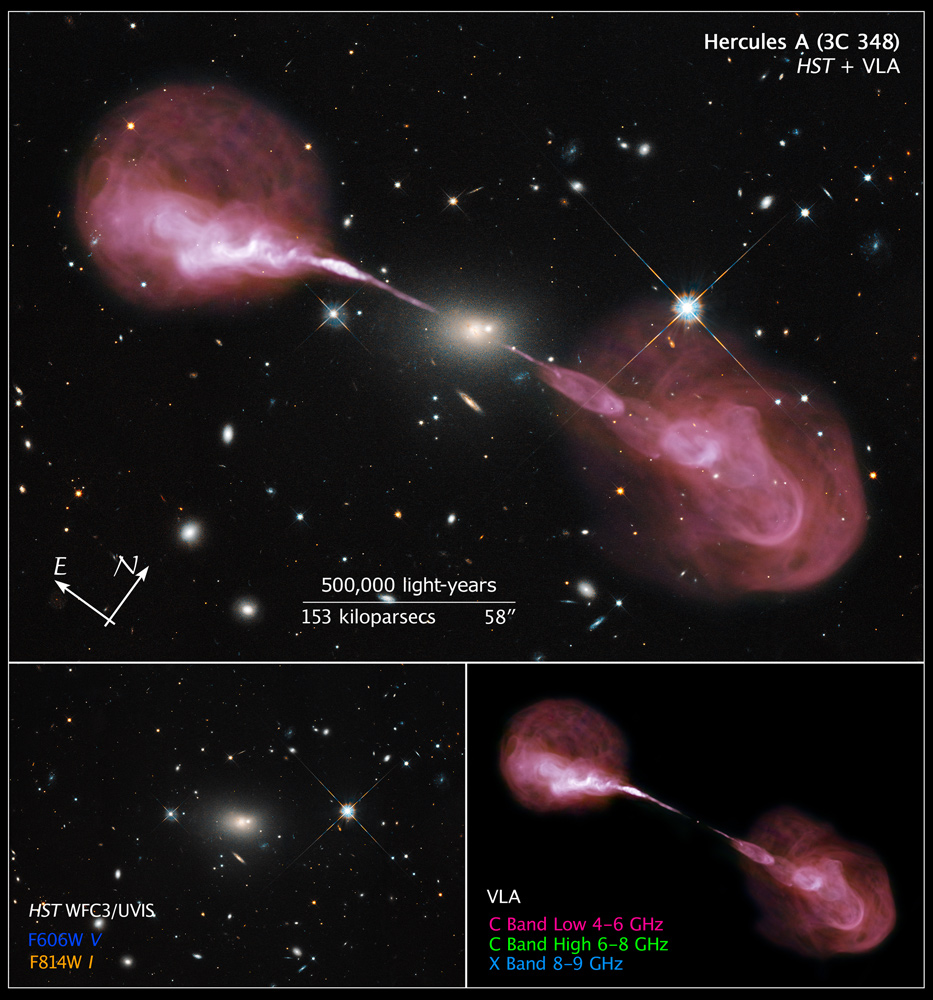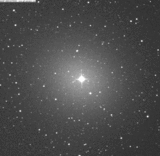According to this image: the optical signal of Hercules A would appear with roughly the same angular size as many of the Solar System planets routinely photographed by amateurs. But at vmag 17.8, which is at least 5 orders dimmer than anything in the Messier and Caldwell catalogues (and spread out over its apparent size) it would definitely be a struggle to detect. Besides, elliptical galaxies aren't the pretty ones anyway. You can take overexposed photos of the Moon or Venus and obtain results that look like elliptical galaxies. Trust me, I know.Roger wrote:The galaxy is also known as PGC 59117, and is of visual magnitude 17.8. It appears to be the largest galaxy in a dense cluster. Although this is within reach of amateur astrophotographers, it would be tiny on their CCD chips, so most amateurs leave such distant objects alone. So, the Hubble view is shown. (Of course, the radio jets would not show up in CCD images.)
I have a modest SCT scope (1500mm FL, f/10) and a DSLR capable at high ISO, and fairly dark, but still suburban skies, and I cannot convincingly detect a point source dimmer than vmag 15. It is even more difficult when I slow down the focal ratio beyond prime focus to reduce the FOV, as I do when imaging planets.

